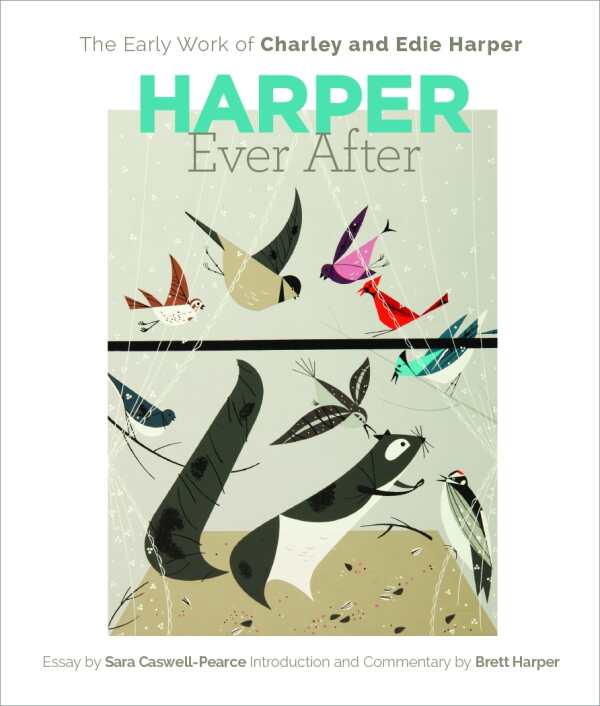Harper Ever After
The Early Work of Charley and Edie Harper
Through their shared legacy, Charley and Edie Harper’s collaboration continues in this commentary on their life and work.
Harper Ever After: The Early Work of Charley and Edie Harper is a companion volume to the 2013 joint exhibit of these two artists that was originally held at the Art Academy of Cincinnati. The artwork is plentiful and colorfully captivating, with the added dimension of the Harpers’ unique partnership of over sixty years—a connection that began on their first day of class at the academy in 1940 and ended with Charley’s death in 2007.
Appealingly different from often tormented or overblown artistic biographies, wherein the road to excess seems to be the deliberate path to glory, Harper Ever After offers a dual portrait of camaraderie, love, and mutual devotion to the creative life. Both born in 1922, Charley Harper and Edith McKee met as art students in Cincinnati, married in 1947, and produced a great deal of work in a commercial and personal capacity.
Charley Harper’s fame has grown over the years, mainly due to his bright, lyrical illustrations of nature—a vivid style that he called “minimal realism.” Designer Todd Oldham is a longtime champion of Charley Harper and has brought Harper’s work to many aspects of everyday life, such as prints, calendars, and textiles. Harper Ever After, however, details Charley’s earlier, more realistic efforts, particularly during his military service.
Edie’s distinctive photographs are featured, along with her fashion art and student exercises. There are love notes, cryptic scrapbooks, self-portraits, portraits of each other, and wonderful experimentations with abstract themes. Harper Ever After also includes separate perceptions of the same landscape, such as 1947’s Oregon Coast, painted on the couple’s honeymoon, and the occasional but infrequent collaboration like To the Moon and Back, done in 1945.
With insightful commentary by critic Sara Caswell-Pearce and the Harpers’ own son Brett, Harper Ever After recaptures a particular time and place in postwar American art. Furthermore, it moves Edie into the spotlight next to her husband, allowing a fresh look at her talent developing alongside of his own.
Reviewed by
Meg Nola
Disclosure: This article is not an endorsement, but a review. The publisher of this book provided free copies of the book to have their book reviewed by a professional reviewer. No fee was paid by the publisher for this review. Foreword Reviews only recommends books that we love. Foreword Magazine, Inc. is disclosing this in accordance with the Federal Trade Commission’s 16 CFR, Part 255.

